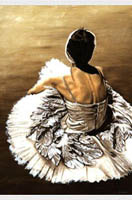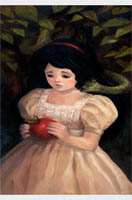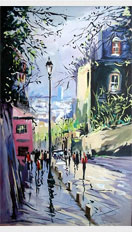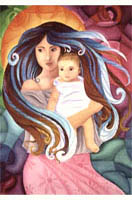Alexei Kondratyevich Savrasov
Alexei Kondratyevich Savrasov (Russian:1830 –
1897) was a Russian landscape painter and creator of the lyrical
landscape style.
Savrasov was born into the family of a merchant. He began to draw
early and in 1838 he enrolled as a student of professor Rabus at
the Moscow School of painting, sculpturing and architecture (graduated
in 1850), and immediately began to specialize in landscape painting.
In 1852, he traveled to the Ukraine. Then, in 1854 by the invitation of the Grand Duchess Maria Nikolayevna, president of the Russian Academy of Arts, he moved to the neighborhood of Saint Petersburg. In 1857, Savrasov became a teacher in the Moscow School of painting, sculpturing and architecture. His best disciples, Isaac Levitan and Constantin Korovin, remembered their teacher with admiration and gratitude.
The Rooks have Come Back was painted by Savrasov near Ipatiev Monastery
in Kostroma.In 1857 he married Sophia Carlovna Hertz, sister of
art historian K. Hertz. In their home they entertained artistic
people and collectors including Pavel Mikhailovich Tretyakov. Savrasov
became especially close with Vasily Perov. Perov helped him paint
the figures of the boat trackers in Savrasov's Volga near Yurievets,
Savrasov painted landscapes for Perov's Bird catcher and Hunters
on Bivouac.
In the 1860s, he traveled to England to see the International Exhibition, and to Switzerland. In one of his letters he wrote No academies in the world could so advanced an artist as the present world exhibition. The painters who influenced him most were British painter John Constable and Swiss painter Alexandre Calame.
The Rooks Have Come Back (1871) is considered by many critics to be the high point in Savrasov’s artistic career. Using a common, even trivial, episode of birds returning home, and an extremely simple landscape, Savrasov emotionally showed the transition of nature from winter to spring. It was a new type of lyrical landscape painting, called later by critics the mood landscape. The painting brought him fame.
In 1870 he became a member of Peredvizhniki group, breaking with government-sponsored academic art.







